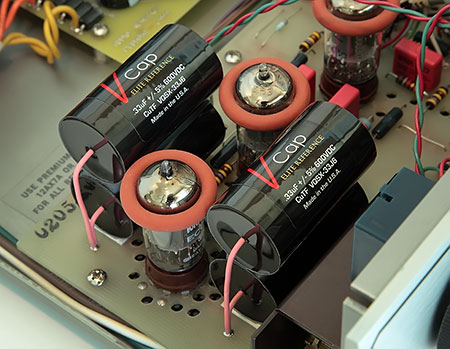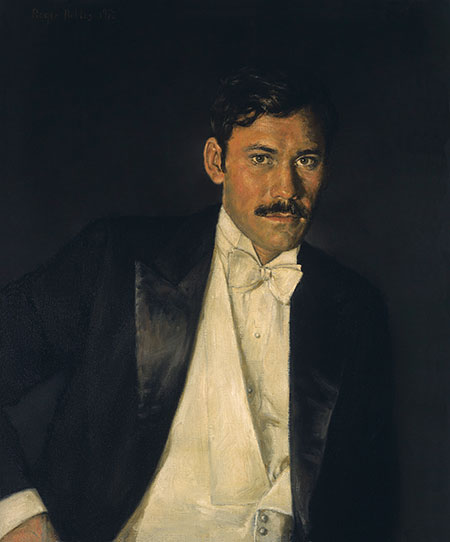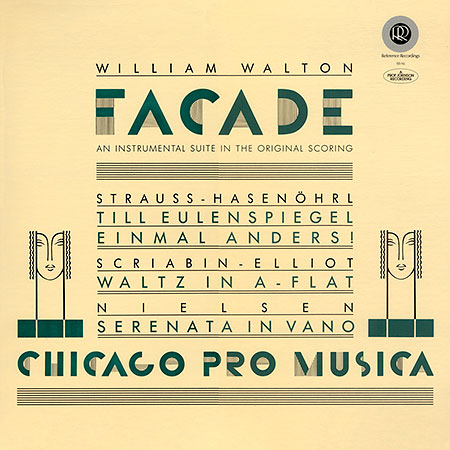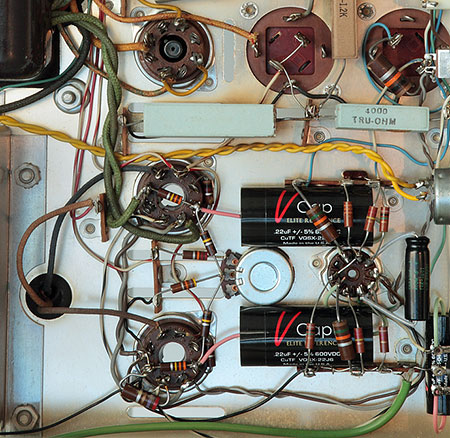|
|
||||||||||
Roger Robles is an outstanding portrait, fashion, and editorial photographer, as well as an accomplished oil painter whose work is displayed in the Smithsonian. An 'artist' in the truest sense of the word... Roger also does transfer and digital restoration of 78 RPM recordings, and has been producing jazz and dance band CD reissues for Sony Music and other smaller labels. Some of these lost treasures, along with his original cover designs, can be enjoyed on his entertaining Youtube feed. Very cool. To my humble delight, the following review arrived in my in-box this morning, by Roger "the Audiophile". ...a review by Roger Robles Be warned! ....these things are addictive! I began the journey with my usual skepticism and cynical view of a product that seemed, despite the accounting of Internet "cap-heads", too good to be true. I read the reviews and, even with those unanimous raves, delayed the commitment for as long as possible. I heard the compelling reactions to TFTF V-Caps, but it wasn't until the appearance of the CuTF (Copper / Fluoropolymer Film) successor that a bell went off in my audio grey matter. Could this be the capacitor that would take my system to the next level and give me the warmer sound I craved, if even by a small increment?
As an avowed Luddite, I’m not one easily impressed or swayed by the latest and greatest, and I’ve had my share of disappointments with over-hyped electronics. As we all know, the artist’s pallet for shaping sound in tube gear is the interconnect, the tube and the capacitor. In the past, I have found caps to be the most subtle altering element of the three, until I met the V-Cap. For the first time, I now understand the term “invisibility” in sound amplification. But it’s more than just being transparent or invisible – the Copper Foil / Fluoropolymer Film V-Cap takes the listener to a level of such highly focused presence – and at the same time, displays the human voice and acoustic instruments with a natural warmth, bloom and sweetness that is inherent in the live performance. Truly, a front row seat in a perfect world. As a first impression, the most striking thing is the ultra-quiet background – it makes one realize how noisy other capacitors are. By the term “quiet” I’m not talking about that artificial smoothing that can be found in certain other caps and interconnects. This is a true, low-noise field with no gimmicks. It would be easy to go to the over-used audio clichés – but these familiar words have lost their meaning. The V-Cap CuTF deserves a new vocabulary to describe an electronic component that simply transports the listener to a place unknown. As I have been tweaking and “cap rolling” for too many years, trying to find that land of audio nirvana, the V-Cap is a quantum leap over the myriad of small improvements that are possible with updates and tinkering. Admittedly, I have not heard everything out there, but I’ve heard enough high-end to know when a system has something special. I’ve spent many frittered hours visiting snooty, boutique listening rooms to be disappointed and, frankly, shocked that they can sell these overpriced (unmentionable) names to those poor naïve millionaires. So, can the secret of great sound be in a shiny black capacitor? ….well, possibly yes. Can an old classic amp be updated to blow the wheels off of a modern $50k dream amplifier? ….most definitely! As I crossed the Rubicon with my first set of CuTF V-Caps, I felt more of a “Las Vegas table” experience than a day of soldering at my workbench. After all, this really was an expensive gamble that could have gone “south” in a big way. Chris VenHaus recommends that his V-Caps burn-in for a good 400 hours, for full maturity. Since my level of patience is exactly half of his, 200 hours would be my goal, and I’d just leave the remaining burn-in time as something to anticipate with the enjoyment of music. At this point, I should interject that for the burn-in process, using an ARC SP-3 preamp (with tone controls), I stumbled into an interesting, accidental experiment. The CuTF caps were alligator clipped to the output coupling for the next 150 hours of silent burn-in. As I am an incurable bass freak, I had a crazy hunch that maybe by boosting the bass control I could create a bigger, better bottom end in the cap. (My system always was on the edge of being bass-shy.) So the next 150 hours of heavy thumping might give me the cap that would perfectly balance my sound. Well, when time came to “proof” the results, I had the shock of my life – I found bass notes that I didn’t know existed. My Franz Waxman Bride of Frankenstein CD had the house shaking! This was a BIG bass, but well defined, flat, deep and resolved. Yes, the bass was amazing, but the top end was missing – just rolled off the cliff. Did I ruin these valuable capacitors with my weird burn-in? ….or is this the way the CuTF cap is supposed to sound?? Since it was my first foray in the world of VH Audio, I had no point of reference. I emailed Chris asking about a possible bypass suggestion that he could make to brighten up the top end. He shot back defensively, “V-Caps are dead-nuts flat!” ….oy-yoy-yoy, did I step in it? My next stop was a phone call to an old-timer tech friend (who goes back to the days of tone controls) – he said it’s always better to force up the treble when burning in capacitors. So I figured, what can I lose at this point – and I proceeded to add another 50 hours of silent burn-in, but this time with a tizzy treble and no bass. When the time came to hear the results, my trembling fingers rotated the volume control – it was like opening Tutankhamun’s tomb – but what I experienced was totally unexpected. I heard sounds of such magic and beauty, the likes of which I’ve never heard before on any sound system. This was something very new and spectacular. Yes, the frequency response was ruler flat, top to bottom, but with a clarity so natural and real – so relaxed and open, with all of the delicate detail and air – one could step right into the orchestra. These are the moments that only audiophiles understand, when our labors are rewarded with perfection.
So what are the conclusions of the bass and treble burn-ins? I’m not sure Mr. VenHaus is completely aware of the potential of his V-Caps to be equalized and manipulated to conform to the needs of a sound system. It is a remarkable and useful feature to actually be able to customize caps to perform as we wish, while they still maintain the characteristics we like. It’s too bad my accidental experiment hadn’t been more scientific, so I could draw a more solid resolution. My guess is that many capacitors will assume the qualities and equalization of the signal they are given. V-Caps seem to be especially malleable and friendly for this kind of adjusting. The permanence of such tweaking is unknown. It is clear that these amazing capacitors are transforming, and seem to adapt to any environment. Roger made an excellent observation, and has demonstrated a good method for burn-in, when using a music signal. Tipping'the bass/treble up, distributes the energy better to all the bands, and is a good alternative solution to feeding with pink noise. Once full burn-in is complete, I believe the ultimate outcome of either method will be identical. - Chris VenHaus My subsequent burn-in routine has been successful with a simultaneous bass and treble boost – nothing extreme – just pushing a bit at the top, and pushing a bit at the bottom. And it works! I personally think the V-Cap curing time might be a little faster than the consensus – at least, acceptable results can come sooner than most people think. The CuTF's even sound gorgeous in the early hours of burn-in. It seems that 50 hours is the first plateau of beautiful sound – 100 hours is double the effect – and 200 hours will take you to the angels. I can only speculate on the VenHaus 400 hour threshold.
Since discovering the CuTF, I’ve been raiding my stash of backup amps and preamps- ripping out the Dynamicaps, Rel-Caps, Auricaps and Mundorfs that I once thought so satisfying. At every turn, the V-Caps seem to be the perfect sonic fit – they open like a flower in each coupling. I can’t find anything I don’t like about them – all of the characteristics that are prized and objectified in a capacitor are here, plus much more. The test of any good sound system is the ability to capture and hold the listener for hours – to suspend time, and create a euphoric high where earthly reality falls away; the V-Cap does exactly this. And when a clunky, old Scott amp suddenly sounds like it dropped from heaven, you know your cap money is well spent. I never thought this kind of alchemy was possible. OK, now for the bad news: The CuTF V-Caps are large and a bit heavy, so a little planning is sometimes needed to make them fit. For tight spaces, I would recommend being as creative as possible to make them work – it’s worth it. Visually, they are almost too pretty to be tucked away in some dusty amp – they look more like they belong in a heart-shaped candy box. The gleaming black finish and striking red V suggest the kind of flawless sonics that are in store for the new owner; a real pride of manufacturing. They look like they sound! Are CuTF V-Caps too expensive? Some say yes. As a part-time modder, I say no. ….in fact, I think they’re a bargain – considering what they do for a sound system. What else can you spend your money on that will transform your music so dramatically? Certainly not tubes and interconnects. The CuTF is worth the price. If you have mediocre equipment, the caps will take the audio quality to an amazing level -- if you have high-end gear, be prepared for a trip to the moon. These caps do not disappoint, and even if you start small, the benefits are huge. - Roger Robles
READ MORE REVIEWS of the V-Cap Capacitors |
||||||||||
|
|
||||||||||




